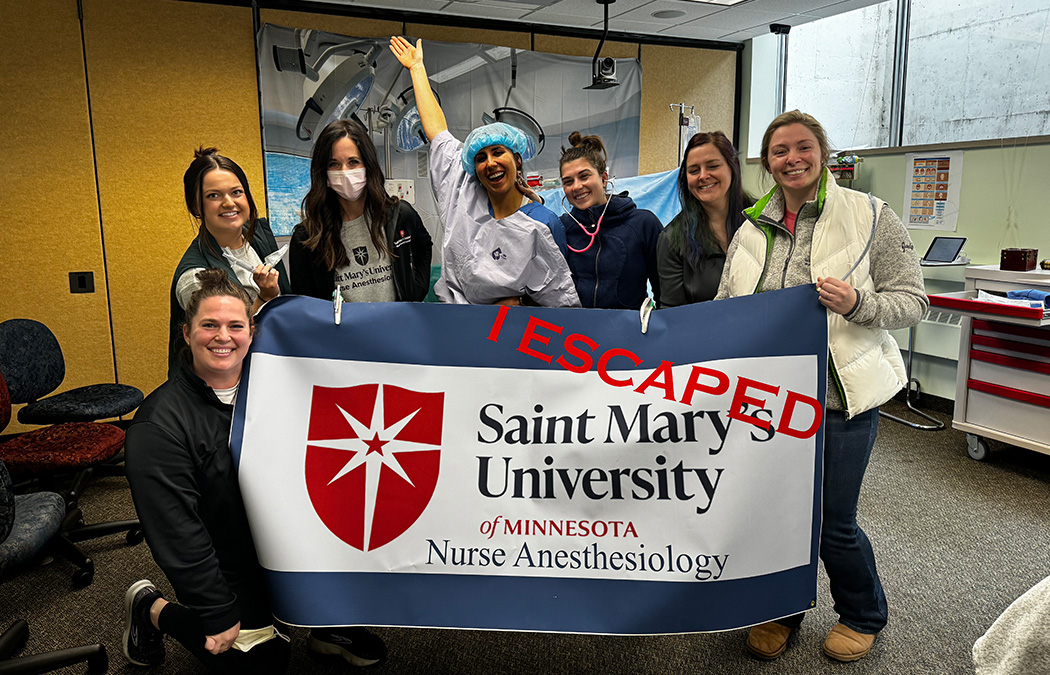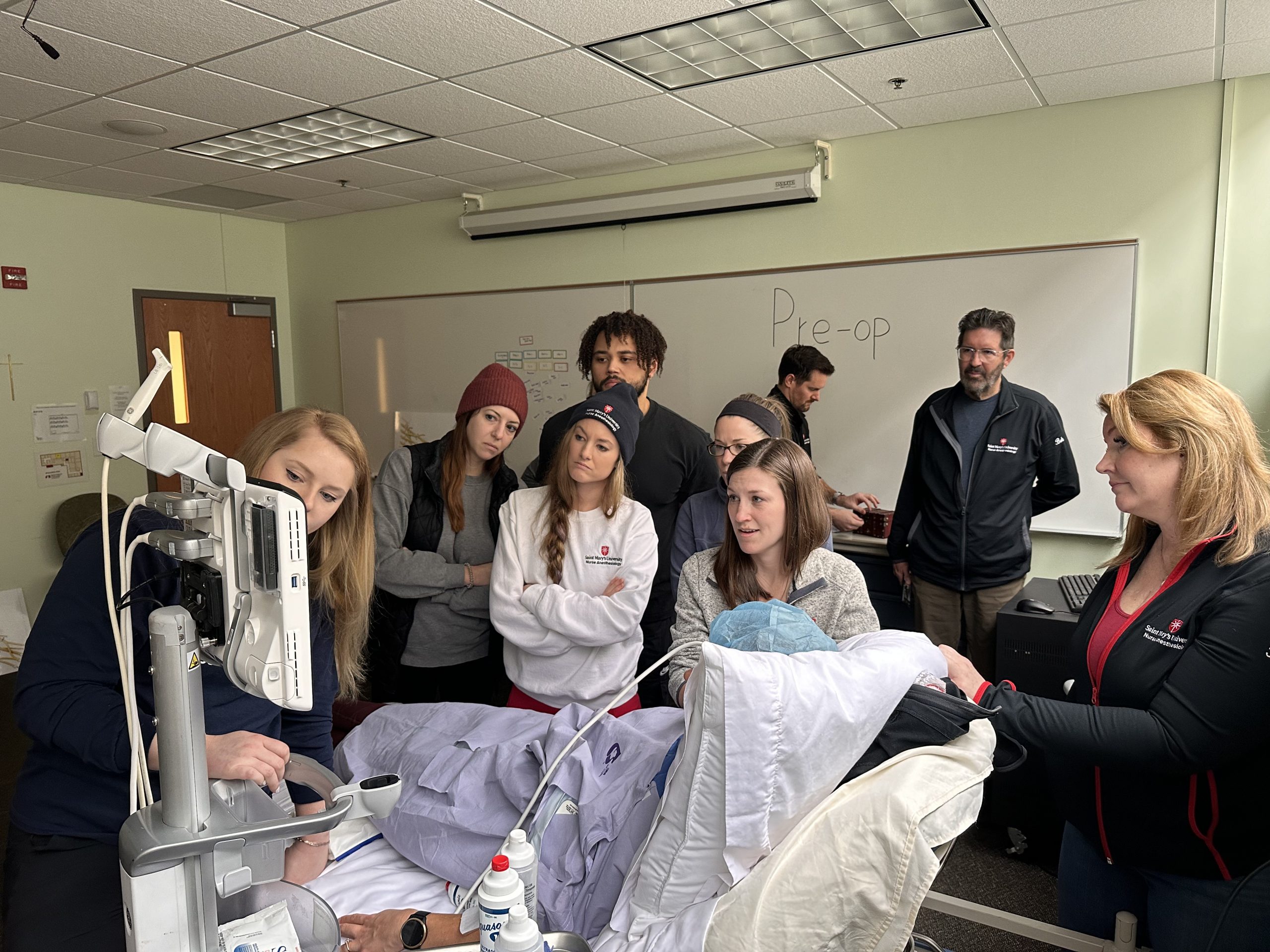Saint Mary’s University of Minnesota’s Doctor of Nursing Practice Nurse Anesthesiology program has gradually incorporated elements of both gamification and simulation into its curriculum for the last decade. However, the idea to merge the two into a single activity first ignited at Saint Mary’s in 2023 when part-time professor, Dr. Rachel Edgerton proposed using an escape room for continuing education at a clinical facility.
Dr. Edgerton and Dr. Carol Daniel, academic director of the nursing anesthesia program, created two different patient operating room case scenarios where they could build and incorporate multiple learning objectives related to the specific surgeries and simulated skills recently taught. These patients had varying complex patient health histories, and Student Registered Nurse Anesthetists (SRNAs) were able to combine and apply the treatment and surgical planning content together.
There is a vast difference between book learning and the real world, and by creating a surgical case scenario, we can incorporate the two. The adult learners we educate appreciate the hands-on, active learning style, as students entering this program are highly skilled intensive care registered nurses. SRNAs must learn didactic anesthesia content and new technical skills before entering their clinical rotations.
Simulation allows a SRNA to build confidence before entering the hospital where these skills are delivered. The anesthesia skills students learn in Saint Mary’s simulation lab include airway management, intubation, central line placement, and regional anesthesia, including spinal, epidural, and peripheral nerve blocks. Creating an escape room surgical case simulation was a way to incorporate the entire surgical experience in a truly interactive way from beginning to end, and it allows the SRNA to evaluate, diagnose, treat, and perform skills that can occur in potentially stressful life-threatening situations in a non-stressful and safe environment — all while having fun!
This year, the nursing anesthesia program implemented its second escape room, which included a preoperative area where students gathered patient information in an operating room. Students had to solve clues to get the patient to each next step and through the surgery safely, with staged emergencies. Clues were immersed with content in different ways and incorporated into various puzzles. Directional locks, numerical locks, deciphering directions with a black light and invisible ink, puzzle boxes, and diagnosing conditions on word locks were some examples of puzzles that students solved. 35 students participated, forming six teams. Two teams arrived on campus for the designated time and went through each scenario. Seven senior student helpers and four faculty participated by being the patient, timing the teams, setting up, and cleaning up the rooms. Overall, the lab met many learning objectives related to all the content, students had a lot of fun and positive feedback, and faculty plan to incorporate more of these scenarios into the curriculum for different content areas in the future.
“It was nice to work as a team, providing input so we could find clues together,” one student shared. “I was able to work with individuals I never interacted with much before, and it was a really nice experience. The escape room helped me look at the entire picture for the patient and the information we have for resources.”
More activities like the escape room are being incorporated into Saint Mary’s nursing anesthesia program because students continue to express a preference for this learning type, and the faculty believes it plays a significant role in boosting the confidence and reputation of students entering clinical practice.

